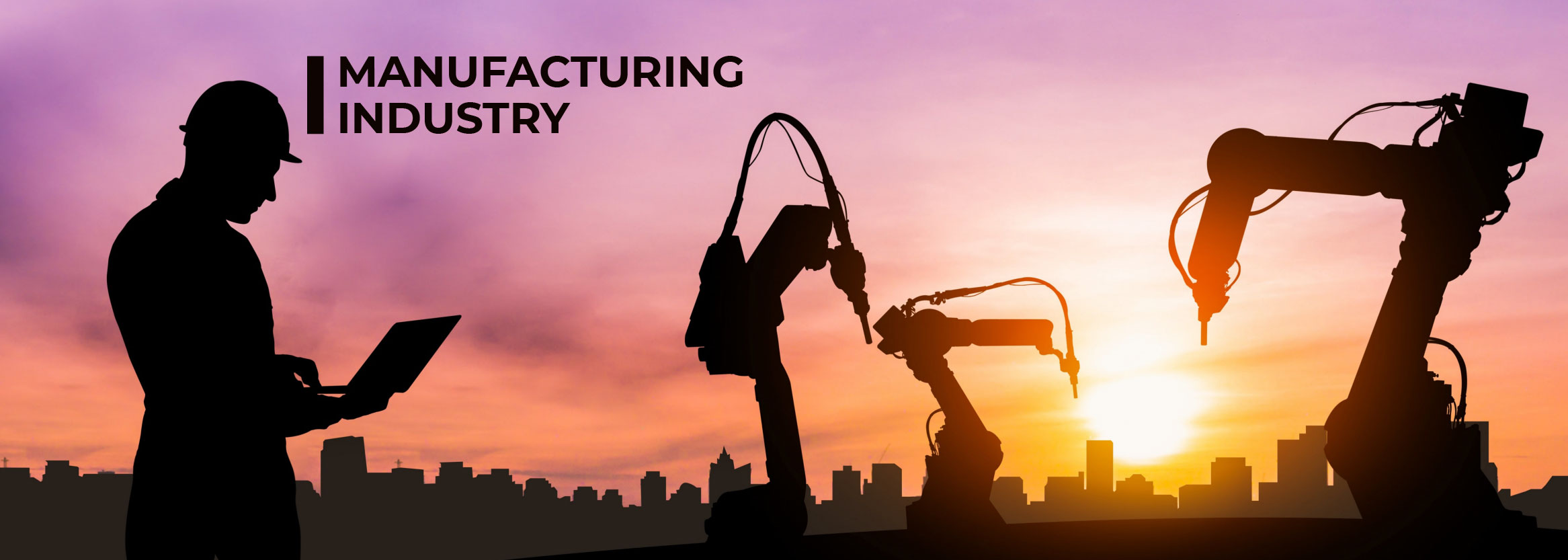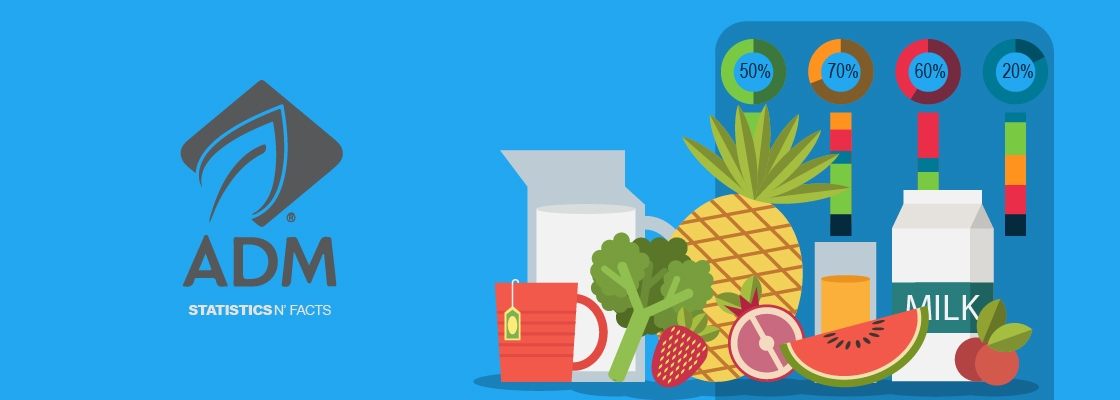Manufacturing Industry Statistics refers to the use of raw materials to produce high-value goods in large numbers. The secondary sector includes manufacturing industries that make finished products from primary materials. Manufacturing industries are crucial to the country’s economic development. The growth rate of the country’s manufacturing industry is an indicator of its economic strength.
This section contains statistics and facts as well as detailed information, such as facts and figures regarding revenue, business segment shares, regional shares, other key financials, information about top Manufacturing companies globally, services and product offerings, recent developments, etc.
Industries that deal with the transformation of goods or materials into new products are called manufacturing industries. The process of transformation can be mechanical, chemical, or physical. Manufacturing companies often have plants, factories, and mills that produce goods intended for public consumption. The manufacturing process is usually dominated by machines and equipment. In some cases, goods may be manufactured by hand. This would include handcrafted jewelry, and other handicrafts, baked goods, as well as art.
Manufacturers make physical goods. The exact process of creating these goods varies from one company to the next. To produce goods for the public, most manufacturers use machinery or industrial equipment. The manufacturing method creates value. Companies can charge premiums for the goods they produce. Rubber, for example, is not very valuable on its own. Rubber is more valuable when it is made into car tires. The manufacturing process which allows the rubber to become a required car part, adds value.
Because factory jobs are middle-class and pay above-average wages, manufacturing industries matter. Manufacturing is one of few industries in which a worker can earn a living wage without having an advanced degree. Many families rely on the manufacturing industry to bring food to the table because it is one of the largest employment sectors of the country. Secondary industries are supported by the industrial sector. Manufacturing is responsible for approximately 1 in 6 service jobs. Even manufacturing companies have to employ accountants, doctors, and financial advisors.
Statistics:
Companies by Sector, Turning to Digital Manufacturing Platforms
One survey found that nearly six in ten of the ten professionals involved in the production of consumer products stated that digital manufacturing platforms would be their number one priority in the next one or two years. Similar percentages of managers indicated this intention in engineering and construction, followed by 54% in the automotive industry.
Top Ten Manufacturing Countries Output Globally, by Percentage
China is the world’s largest manufacturing country, with a global output of 28.7%. With 16.8%, the United States is second in terms of manufacturing output.
Top 10 Manufacturing Companies Worldwide
This graph displays the top ten worldwide manufacturing companies. Volkswagen Group leads the pack with 283,326 Million US Dollars in revenue for 2021.
Value Added by The Manufacturing Sector in Percent of Global GDP
This statistic indicates the contribution of the manufacturing sector to the global GDP. This percentage was 12.10% higher than the 12.04% recorded in the previous year.
Manufacturing Industry Categories:
Food Manufacturing
Food sector manufacturing converts livestock or agricultural products into products that can be consumed. These are mostly sold to retailers or wholesalers, who after selling the products to consumers. There are many food manufacturing products, including baked goods, fruits, and vegetable preserves, grain, bakery goods, and animal meat.
Beverage and Tobacco Product Manufacturing
Non-alcoholic beverage products can also be considered beverages. Ice is also considered to be a manufactured drink. Tobacco products include both loose tobacco products and those in cigar or cigarette form.
Textile Manufacturing
Textile producers convert fibers into usable textiles that can eventually be made into consumer goods, such as sheets, towels, curtains, and apparel. There are several types of textile manufacturing, including fiber, yarn, and thread mills.
Apparel Manufacturing
Two main types of apparel industries exist. The first type is cut and stitch. It means that the apparel is created by first buying the fabric, cutting it up, and sewing it. The second method of apparel manufacturing is to knit the fabric and then cut and sew it. This industry is very popular and employs many workers, such as tailors and knitters.
Leather and Allied Product Manufacturing
This sector deals with leather manufacturing as well as leather alternatives, like plastics and rubbers. Leather alternatives are included in this category of manufacturing because they are often produced in the same factories using the same machinery as leather products. They are not separated by manufacturers, so they are combined.
Wood Manufacturing
Wood manufacturing can include products such as plywood, veneers, and flooring. Manufacturing of wood products includes manufactured homes as well as prefabricated wood buildings. You must cut, shape, and finish wood. Some companies use logs for their wood products, while others purchase pre-cut lumber and then further process it from there.
Paper Manufacturing
Paper manufacturers produce pulp, paper, or other paper products. Because there are many companies that do each of these three processes, it makes sense to group them. It would be cumbersome for these activities to be separated, so it makes sense to group them.
Petroleum and Coal Manufacturing
This industry deals in the transformation of crude petroleum and coke into usable consumer products. Before consumers can use petroleum, they must refine it. Different components of petroleum are separated during the refining process to create different products.
Chemicals Manufacturing
Chemical manufacturing covers many different industries. This is the process of transforming organic or inorganic material into a unique product. Pesticides, fertilizers, and pharmaceuticals are just a few examples.
Plants and Rubbers Manufacturing
This industry produces plastics and rubbers. They are used to substitute one another and are therefore lumped together. Plants can only produce one subsector of each and not both.
Metal Manufacturing
The metal manufacturing industry produces metals such as iron, steel, and aluminum. It also includes foundries. Metals are transformed into end products in this sector. You can find cutlery and hand tools as well as hardware, springs, screws, and nuts.
Machinery Manufacturing
This sector produces machines that can apply mechanical force. These machines can be made through various processes, including forging and stamping, bending, and welding. Manufacturing machinery is complex. It involves many processes. Machines can be complicated and require many components, as well as specific mechanics. One example is that a piece of industrial machinery may have a computer as well as other components. Machine manufacturing can be described as construction, mining, agriculture, cooling, ventilation, and air conditioning.
Computer and Electronics Manufacturing
This sector is growing rapidly and will continue to grow. This sector is highly competitive because of the high demand for electronic products. This is a highly-skilled manufacturing sector due to the use of miniaturized technology and integrated circuits. This category includes computers, communication equipment, and audio-visual equipment to name just a few.
Transportation Equipment Manufacturing
This manufacturing sector is responsible for almost all aspects of transporting people and goods. This large sector of the manufacturing industry includes all types of motor vehicles, aircraft, trains, ships, and other transport equipment. Transport equipment generally qualifies for machinery. These manufacturing processes require many components to be manufactured in the same factories.
Furniture Manufacturing
This sector includes all furniture products, including mattresses, blinds cabinets, lighting, and other related products. These goods must be functional and well-designed. Manufacturing furniture is a complex process that involves many steps. A table can be made by many processes, including shaping, cutting, attaching, and finishing wood.
Manufacturing Industry Trends:
Workforce Shortage
High levels of unemployment will likely limit productivity and growth by 2022. Reskilling should be combined with recasting the employer brand in order to retain and attract talent. Making manufacturing jobs more appealing to the public could help reduce the industry’s perception gap. This will be essential for meeting 2022’s hiring needs. Engaging with a wider network of talent partners can help to reach diverse and skilled talent pools, which could offset recent retirements or voluntary exits.
Manufacturing executives may need to consider how they can balance the goals of culture, innovation, and retention. Flexibility is becoming more popular in offices. Therefore, manufacturers need to look for ways to improve the flexibility of their workforce in order to keep and attract employees. Organizations that are able to manage workforce shortages, rapid change, and can adapt can be successful.
Supply Chain Instability
Supply chain problems are severe and still evolving. Manufacturers face almost continuous disruptions worldwide that increase costs and test their ability to adapt. According to purchasing manager reports, there are still system-wide issues due to rising freight and raw material costs and slow deliveries in the United States. Transportation issues will not go away in 2022. There will be driver shortages at truck stops and congestion at US ports. Customers will pay more if demand is greater than supply.
Extended supply chain instability in the USA could result from overreliance on low inventories and rationalization of suppliers. In 2022, supply chain strategies will be multipronged. Data analysis and digital supply networks can enable flexible, multi-tiered solutions to disruptions.
Smart Factory Initiatives
To capture growth and ensure long-term profitability, manufacturers should embrace digital capabilities. This includes all functions from corporate to the factory floor. Smart factories, which include greenfield and brownfield investments, are key to boosting competitiveness. More companies are making strides and seeing positive results from connected, reliable, efficient, and predictive processes at their plant. With the right combination of vision and execution, emerging use cases can scale from small in-house technology projects to factories or full production lines.
US manufacturers have the advantage of advanced manufacturing, which is a significant advantage over many global competitors. Modern global “lighthouses” factories demonstrate the potential of smart manufacturing. Cloud computing, a foundational technology, allows for computational power, visibility scale, speed, and scale. With technological advancements and the expansion of use cases, industrial 5G could also grow in 2022.
Cybersecurity
Cybersecurity is now a critical risk management issue for executives and boards due to the recent high-profile cyberattacks in various industries and governments. Ransomware was a growing threat to manufacturers due to the pandemic. An increasing attack surface is created by the connections of operational technology, information technology (IT), or external networks. More controls are needed. Technology and legacy systems weren’t designed for today’s network challenges. Manufacturing is now even more at risk from remote work vulnerabilities.
Manufacturers need not just to consider their cyber defenses but also the resilience of their businesses in the event that they are attacked. Cybercriminals can do more than intellectual property theft or financial losses by using malware that ties in AI/cryptocurrencies. They can also stop operations or disrupt entire supplier networks, compromising productivity and safety.
ESG investment
The rapid rise of ESG (environmental, social, governance) factors is changing the definition and elevation of sustainability in manufacturing. ESG ratings can affect the cost of capital, making it a priority to ensure organizational financial health as well as the competitiveness. The expectation for reporting on diversity and equity metrics in manufacturing will rise. Although progress has been slow, there is some momentum in board diversity. Manufacturers are making ESG efforts visible in order to attract talent and satisfy workforce expectations.
Depending on the manufacturer’s end markets and other factors, environmental accountability becomes a more important focus. Organizations are increasingly focusing on environmental accountability to achieve net-zero or zero carbon emissions. They also have sustainability roles and initiatives that quantify energy consumption. The rapidly evolving ESG landscape will require manufacturers to monitor closely in 2022. Many organizations comply with complex reporting regulations, disclosure frameworks, and ratings. Global regulators are also pushing for the disclosure of non-financial metrics. Companies may benefit from proactive approaches to keep up with the changes and maintain a competitive edge.
Top Five Listed Companies in Manufacturing Industry:
1. Volkswagen Group
Volkswagen Group is one of the largest European carmakers and one of the top automobile manufacturers in the world. It is engaged in the production, sale, and distribution of passenger cars and light commercial vehicles. The company also produces components and vehicles for its brands. It operates in the following segments: Light Commercial Vehicles and Passenger Cars; Commercial Vehicles; Power Engineering; and Financial Services. The Passenger Cars and Light Commercial Vehicles segments include the development of engines and vehicle software, as well as the production and sale of passenger cars and light commercial trucks. The Commercial Vehicles section covers the development, production, and sale of trucks and buses. It also includes related services such as genuine parts and other services. The Power Engineering segment is responsible for the design and production of large-bore engines, turbomachinery, and propulsion parts. Financial Services covers leasing, banking, insurance, and fleet management. The company was established on May 28, 1937, and its headquarters are in Wolfsburg.
2. Apple Inc.
Apple Inc. participates in the design, manufacturing, marketing, and distribution of mobile communication, media devices, personal computers, and other related services. Home Pod and iPhone, iPad, iPhone and Mac, Air Pods, Apple TV, and a broad range of consumer and professional software applications including macros and iOS operating systems. Apple Pay and iCloud are some of the other services, accessories, and support offerings. They sell digital content and applications via the App Store. The company sells its products internationally through its online stores, retail shops, direct sales force, third-party mobile network carriers, wholesalers, and resellers.
The company currently owns 16.5 million square feet and has leased 24.3 million square feet of US-based building space. Additionally, the company has approximately 7,376 acres, mostly in the US.
3. Samsung Electronics Co. Ltd.
Samsung Electronics Co., Ltd., an electronics company based in South Korea, engages in information technology, consumer electronics, and mobile communications. It also offers global solutions to businesses. The company offers smartphones, tablets, and wearables as well as audio and video products. It also sells televisions and home theatres. The company has a strong position in the market for different product categories.
4. Daimler AG
Daimler AG is involved in the manufacturing and development of automobile products. It is the world’s largest manufacturer of premium cars and a leader in producing trucks exceeding six tons. Its product range includes premium brands such as Western Star, Mercedes-Benz, Brand Smart, and Mercedes-AMG. EQ and Freightliner.
5. Miller Industries Inc.
Miller Industries Inc. is engaged in the manufacturing of vehicle recovery and towing equipment. Its products are car carriers, light-duty, rotators, heavy-duty, special transport, and other vehicle towing and recovery equipment. In 1981, Miller’s Mercedes Parts was their previous name. They were a mail-order business. Miller Industries’ product line has expanded to include parts for classic Mercedes Benz models from the 60s and 70s as well as SLs from 1963 through 1990. The inventory is fully automated and has over 50,000 part numbers. Most orders are shipped within 24 hours of receipt.
6. Texas Instruments Inc.
Texas Instruments Incorporated designs, manufactures, tests, and sells analog and embedded silicon. These include industrial, automotive, personal electronic, communications equipment, as well enterprise systems. It operates through two segments: Analog Processing and Embedded Process. The Analog segment of semiconductors changes real-world signals like sound, temperature, pressure, or images by conditioning and amplifying them. Often, they also convert these signals to digital data that can later be processed by embedded processors. The Embedded Processing section is specifically designed for specific tasks. It can be optimized for different combinations of power, performance, and cost depending on the particular application.
7. Danaher Corporation
Danaher is a global innovator in science and technology. They are committed to solving complex problems and improving the quality of life for their customers around the globe. The company acts as a medical firm that designs, produces, and markets professional and industrial products and services. It operates in three main segments: Diagnostics, Life Sciences, and Environmental & Applied Solutions. The Life Sciences segment includes a wide range of tools for scientists to investigate the fundamental building blocks of life. These include genes, proteins, metabolites, and cells. This allows them to discover the causes of disease and to test new vaccines and treatments. Diagnostics is comprised of diagnostic instruments, reagents consumables, software, and services that hospitals and physicians use to diagnose diseases and make treatment decisions. The Environmental & Applied Solution segment provides products and services to protect precious resources and ensure that water and food supplies are safe.
8. General Electric
General Electric (GE) is a financial and industrial corporation. Aircraft engines and helicopters, steam and gas turbines, financial services, and industrial equipment are among the services and products offered by the company. Power generation and industrial and medical imaging products are also served. It provides insurance and financial solutions.
9. Medtronic Plc
Medtronic Plc is a medical technology firm that develops, manufactures, distributes, and sells medical devices and related services. It is divided into the following sections: Groups for Restorative Therapies, Minimally Invasive Technologies, Cardiac and Vascular Groups, and Diabetes Products in the Cardiac and Vascular Group can be used to diagnose, treat, and manage cardiac rhythm disorders and other cardiovascular diseases. The Minimally Invasive Technologies Group focuses on the gastrointestinal, respiratory, renal, and lungs. It also includes diseases of the kidneys, pelvic region, and obesity. Neuro-stimulation and drug delivery systems are provided by the Restorative Therapies Group to treat chronic pain. It also treats issues with the spine, brain, pelvic health, and ear, throat, nose, and neck conditions. The Diabetes Group segment provides a continuous glucose monitoring system and consumables for insulin pumps.
10. The Boeing Company
The Boeing Company is an aerospace company that manufactures commercial jetliners, Defense, space, security, and other systems. It operates through the following sections: Commercial Airplanes, Defense, Space and Security, Boeing Capital, and Global Services. The Commercial Airplanes sector includes the development, production, market, and maintenance of commercial jet aircraft. This segment also provides fleet support services, primarily to the global commercial airline industry. Defense, Space, and Security is responsible for the design, production, modification, and testing of manned and unmanned military planes and weapons systems for global strikes. This includes fighter and combat rotorcraft airplanes and missile systems, global mobility, including tanker, helicopter, and tilt rotor, as well as airborne surveillance and recon. Global Services offers services to both Defense and commercial customers.
Technologies Applications that positively impact the Manufacturing Industry:
Beyond the technology, a manufacturer can also be innovative. Innovation can also include the creation of new business models and new processes as well as the enhancement of existing products. Technology can support and encourage innovation. Technological innovations can help manufacturers produce higher quality goods with lower costs and increase their competitiveness. Engineers and innovators are constantly looking for ways to improve upon existing technologies, meet unmet demand, offer goods for the untapped markets, and most importantly, look forward to staying ahead of the competition.
Additive Manufacturing / 3D Printing
While additive manufacturing was developed in the 1980s and gained more attention in the past few years, it is still a relatively new technology. It includes all of the processes that go into printing 3-dimensional products. That’s why it’s also known as 3D printing. Cold spraying, a form of additive manufacturing, involves blasting metallic particles at high speeds through a nozzle, binding them together to create shapes. The computer controls the building of materials layer by layer to create a part. This produces a high-precision replica of the original design, which can reduce waste and help manufacturers save money. Additive manufacturing technology has historically been costly and was usually used by the top players in the industry. Recent advances have made additive production more affordable. It is expected to be a popular choice for smaller companies. The manufacturing landscape will continue to be transformed by 3-D printers, which provide more efficient ways to make custom parts and products.
Advanced Materials
A report by the PCAST states that “almost every megatrend for the future: alternate energy devices or energy efficiency; new materials to counter shortages; and new paradigms chemical safety and cybersecurity depend highly on advanced material” and that advanced composites “will fuel emerging multibillion-dollar industries.” But, there are ongoing efforts to create manufacturing processes that are cheaper and faster so that advanced components can be used in a wider variety of products and applications.
Cloud Computing
Cloud-based computing utilizes remote services that are connected to the Internet to manage and process data. While cloud computing is expected to grow in popularity, security concerns should be addressed. Cloud computing is becoming more popular among companies, allowing them to share information and make better business decisions. Cloud Computing reduces production time, quality control, and costs.
Internet of Things (IoT)
While smart technology is not new, it is quickly becoming the wave for the future of manufacturing. Imagine a workplace in which connected equipment can communicate via the Internet. The computerized manufacturing machinery, as well as other equipment, will be able to send/receive notifications regarding operating conditions. Notifications are sent to other devices once a problem has been detected so that the whole process can automatically be corrected. It will lead to lower costs, reduced downtime, and better quality. This technology will enable the development of new positions and types in the manufacturing workforce.
Nano-Technology
Nanotechnology deals with the matter within one and hundred nanometres. One billionth of an inch is a nanometre. Nanotechnology has been used for decades in the aerospace and medical industries. But, nanotechnology is being used to create lightweight, stronger materials for boats, sports equipment, and auto parts. Nanostructured catalysts increase the efficiency of chemical manufacturing processes by reducing waste, energy consumption, and cost. They will also be used more often in healthcare and pharmaceuticals.








